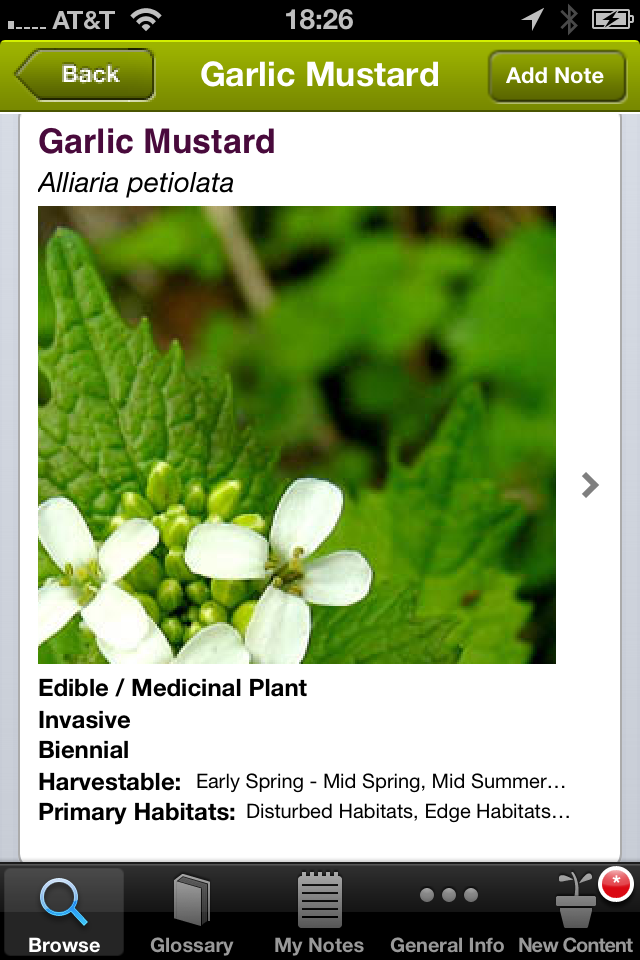The updated Wild Edibles app by New York forager Wildman Steve Brill is a handy tool for the inquiring invasivore, whether an experienced forager or new to the Planet of Weeds. Brill’s app mixes vegan recipes, field guide, medicinal uses, and tips on how to spot these familiar plants. Wild Edibles has pages for invasive species such as curly dock, garlic mustard, autumn olive, and black nightshade as well as natives. With nice illustrations and clear tips for field identification, many of the plants are clearly marked as native or invasive on the main page, along with the season when they can be harvested. The Habitat section tells you where you can expect to find the plants, range in the US, and the place of origin. Links to poisonous lookalikes are designed to avert disaster.
Since his first foraging tour in 1982, Brill has been leading the charge to get New York City residents out of their apartments and into the parks where fresh food in the form of wild plants and mushrooms is always available (Brill is a vegan). This app is a great supplement to those tours.
The site is attractively designed by WinterRoot, a company committed to permaculture, renewable energy, and computer science ($7.99).






























{ 2 comments… read them below or add one }
This is a great blog — I hope you continue!
Thanks for the excellent review. Here are a couple of comments:
1. I lead tours in parks throughout the Greater NY area, not just NYC.
2. I’ve also written 3 books and have a website, http://www.wildmanstevebrill.com.
3. Although I’m usually a vegan, I sometimes still eat chickweed, lamb’s-quarters, hen-of-the-woods, and cattails!